This question has been discussed for centuries. Tortoises are a relatively new evolutionary radiation. They arrived in the archipelago, spread over its islands and volcanic craters only a few million years ago (in evolutionary terms a “wink in an eye”) and have been there ever since. They may not have matured into different species. On the other side, some populations separated by oceans for more than a million-years have evolved into quite different creatures.
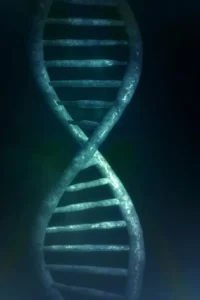
©Galápagos Conservancy
Galapagos Conservancy funds this research, because the answer to the question will help us understand how best we can conserve the Galapagos giant tortoises. How can decision makers decide where to focus their conservation efforts on tortoises when they do not know what species is protected? Many biologists believe that if all tortoises belong to a single species then a few healthy populations in the archipelago are enough to “save the specie”. This is a belief held by many today, and one increasingly shared by the International Union for the Conservation of Nature. If, however, every tortoise on every island or volcano represents a distinct species, all of them should be protected, as the Galapagos National Park Directorate, and many conservationists, have long believed.
A team of international scientists published the preliminary results of their investigation in a recent publication. The title foreshadows the key finding, “Whole genome sequencing confirms multiple Galapagos species.” They sequenced the entire genomes of 38 tortoises, including some that were functionally extinct (using DNA from museum specimens). The team found that Galapagos tortoises could be classified into as few as 5 species or as many as 13, depending on how they analyzed the data.
The real picture, however, is much more complex than “one or many” species. Each island and volcano in Galapagos represents a distinct stage in the speciation process, with some taxa more advanced than others. Imagine, for instance, that an Espanola (small, flat and saddle-backed) tortoise and an Alcedo Volcano (large and round and migratory) tortoise have been separated for at least one million years, but are clearly two different species. Some species are still in the process, however, like the tortoises that are scattered over the large and small volcanoes on southern Isabela Island. They’re virtually identical in size, shape and behavior.
This study shows that Galapagos giant tortoises cannot be considered as a single species. To do so is harmful to conservation. This finding provides further foundation and justification for the Government of Ecuador to continue its efforts to protect and restore giant tortoises “islandby-island” and “volcano-by-volcano.” Such an approach aims to save the entire swath of diversity and evolutionary history represented in the giant tortoise dynasty of Galapagos, which together represent the highest concentration of tortoise diversity on Earth.
We celebrate International Day of Women and Girls in Science on February 11, honoring their contributions to science and tech, and advocating for increased participation in areas where women have historically been underrepresented. This day is especially important in Galapagos because it highlights the crucial role women play in conservation and scientific exploration in this archipelago.
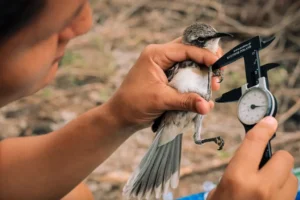
©Galápagos Conservancy
Diana Loyola is a biologist and researcher who has contributed significantly to the understanding and management of avian pox on Galapagos. Diana’s research with Darwin’s Finches, on Santa Cruz Island funded by a Galapagos Conservancy conservation grant, sheds new light on this viral disease’s impact on local birds. This work is crucial in conserving the unique biodiversity of the archipelago.
Domenica Pinda, who is a Bachelor in Biodiversity and Genetic Resources on the Galapagos Conservancy Team, shows her dedication to conservation of the island through her work. Domenica Pineda’s conservation efforts, which focus on sustainable development and eco-restoration, show her commitment to the field and desire to inspire others. My professional goal is to raise environmental awareness and promote sustainable development on Galapagos. I am especially passionate about leading eco-restoration projects in ecosystems where direct and indirect human action has degraded them,” said Domenica.
Diana and Domenica’s inspiring stories, as well as those of other women, demonstrate the importance that women have in science and conservation. Their work on Galapagos is a beacon to promote a sustainable and equitable future where gender equality and diversity will be integrated into scientific and environment efforts. We celebrate International Day of Women and Girls in Science by honoring the women who shape science and conservation in Galapagos and beyond. They are paving the path for future generations in this important field.
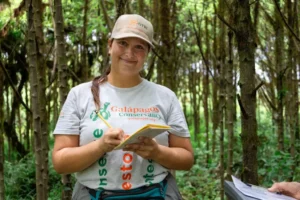
©Galápagos Conservancy
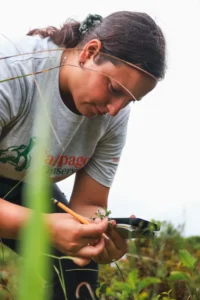
©Galápagos Conservancy
February is a month packed with history and festivities for the Galapagos Archipelago. This year, they’re celebrating two major milestones: becoming part of Ecuador 192 years ago and officially becoming a province of Ecuador 51 years ago. For the islands of Santa Cruz and San Cristobal, there’s even more to celebrate with their district anniversary.
Let’s rewind to February 12, 1832, during the presidency of Juan Jose Flores, decided to make the Galapagos Archipelago part of Ecuador, and called it the “Archipielago de Colon”. Fast forward to February 18, 1973, and the islands took another big step, becoming the 20th province of Ecuador, with Puerto Baquerizo Moreno as its capital. The newly formed province then created two districts, Santa Cruz and San Cristobal, followed by Isabela later on March 16 of the same year.
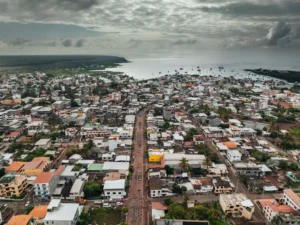
©Galápagos Conservancy
As we celebrate these anniversaries, it is an opportunity for us to reflect on the impact humans have had on Galapagos and the remarkable resilience of its community. At this significant moment, we express our sincere gratitude to the Galapagos community for their tireless dedication to protecting this unique ecosystem.
This year, we had the honor of participating in the civic parade that commemorates historical events. During the event, our General Director, Washington Tapia, emphasized the importance of remembering the history of Galapagos. He stated that the archipelago is not just a place with unique ecosystems and biodiversity, but also a socio-ecosystem where over 33,000 people live. “Therefore, it is the responsibility of everyone to work towards ensuring a harmonious coexistence between humans and nature”.
As passionate advocates for Galapagos, we remain firmly committed to protecting this natural wonder for generations to come. We take pride in supporting the conservation of its ecosystems and recognize the importance of promoting sustainability. We believe in supporting local initiatives that prioritize both environmental conservation and the well-being of the province’s residents.
The Galapagos archipelago stands out as a testament to the beauty and wonder of our planet, reminding us of the importance of conserving its natural wonders for present and future generations. As we celebrate this landmark anniversary, let’s continue our collective efforts of almost four decades to protect Galapagos and its people for years to come.
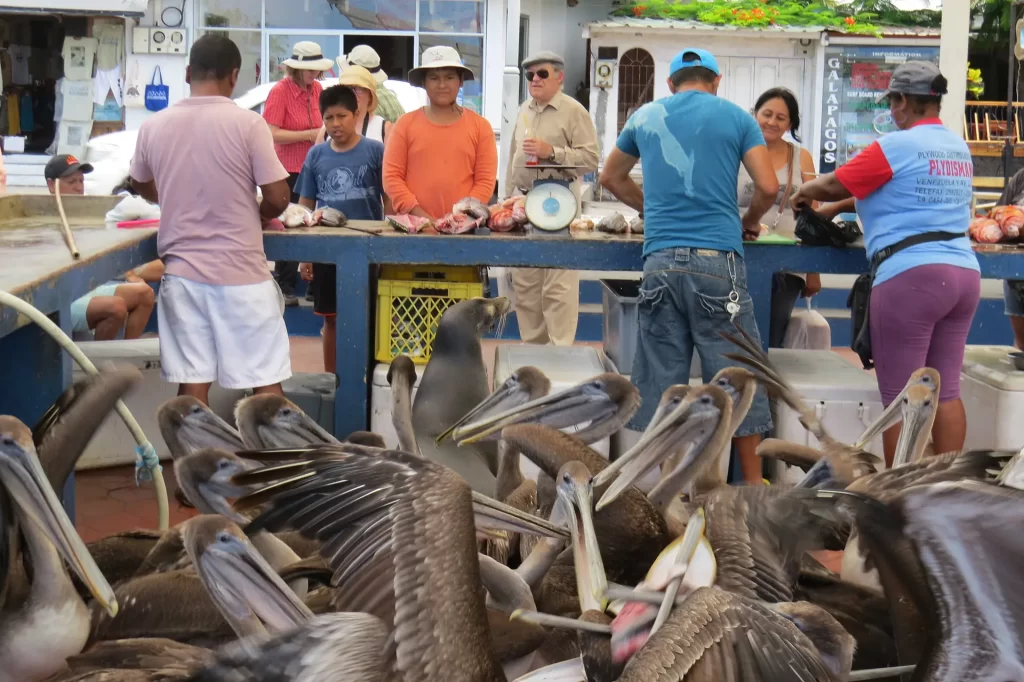
©Marylee Stephenson
Ecological restoration in Galapagos is often a slow, methodical process.
It is possible to remove invasive species square meter by sq meter. It could take decades to breed critically endangered giant turtles.
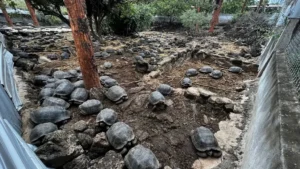
©Galápagos Conservancy
It’s just the way things are.
Ecological restoration can move at a faster pace on rare occasions. This will be the situation starting in January 2024.
The Galapagos National Park Directorate will, in the new year, begin the restoration of 13 species on Floreana Island, with the support of the Government of Ecuador, and in collaboration Galapagos Conservancy!
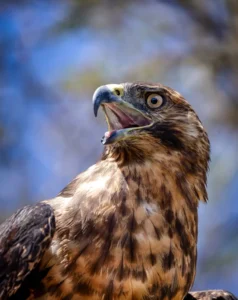
©Galápagos Conservancy
It’s true: Thirteen species of birds will be returned to the wild on a small island where they used to thrive.
List includes: Galapagos Mockingbirds (abruptly disappeared for over 150 years), Lava Gulls and Barn Owls. Also included are Galapagos Flycatchers.
The idea is that there is no such thing as an isolated species, and the more diverse the ecosystem, the greater the chance for all species to thrive.
This won’t happen in a hurry. There will not be a mass release of all species at the same time.
When it happens, be prepared! The restoration will happen quickly, and will be a unique island restoration experiment for the Galapagos Archipelago. It could serve as a global model of ecological recovery.
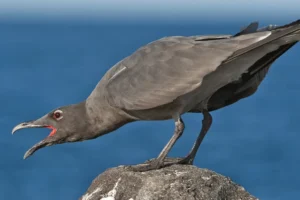
©Gerald Corsi
Isabela Island is one of four inhabited islands within the Galapagos Archipelago. It boasts the most vibrant biodiversity. The iconic giant tortoises of the island are being protected with significant efforts. These magnificent creatures are vital to the Galapagos ecosystems and biodiversity. These tortoises are important, but they face constant challenges in their quest for survival.
We are committed to protecting these giant tortoises as part of the Galapagos Conservancy-funded project, “Strengthening Responsiveness of the Galapagos National Park Directorate and its Management Capacity in Protected Areas.”
Our initiative includes the revitalization and protection of the Arnaldo Tupiza Breeding Center, located in Puerto Villamil. This is a vital sanctuary for these majestic creatures. The center was established in 1997 and covers two hectares. It is dedicated to breeding giant tortoises. The activities are successful because of the dedication of park rangers, volunteers and a conservation officer from the Galapagos Conservancy.
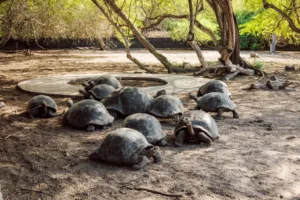
©Galápagos Conservancy
The Giant’s Home: Improving it
In 2020, the Center began its first optimization phase. We made major improvements to the incubation system and the juvenile tortoise pen. Our efforts are currently focused on improving the breeding pens. This includes the ramps, pools and feeding areas. These actions are aimed at providing optimal conditions for tortoises to breed. These improvements have made it easier to care for tortoises effectively while minimising unnecessary disruptions.
Specialized Care to Ensure a Sustainable Future
Washington Tapia our General Director, stressed that the Isabela Breeding Center along with the ones on Santa Cruz and San Cristobal Islands serve as a conservation tool to help recover the most endangered species and are an important contributor for the Galapagos economy. The center is popular with tourists and local families.
When they return to the natural habitats, captive-born tortoises can play a significant role in ecosystem engineering. By dispersing their seeds, they actively contribute to the dynamics of plant community dynamics. This cycle highlights the close connection between these animals, and the health of the Galapagos eco-systems.
Vision for the Future
The upgrades made to the “Arnaldo Tupiza” Breeding Center are intended to improve the facilities and demonstrate a renewed commitment towards the conservation of giant tortoises. Every effort is made to keep these magnificent creatures on a path of recovery and harmony coexistence.
Galapagos Conservancy is able to protect and conserve the unique biodiversity in the archipelago thanks to the generous donations of our supporters and conservationists. Isabela Island’s Breeding Center has been optimized to ensure that giant tortoises can thrive in the future, continue to shape their habitats and become one of southern Isabela Island’s primary animals.
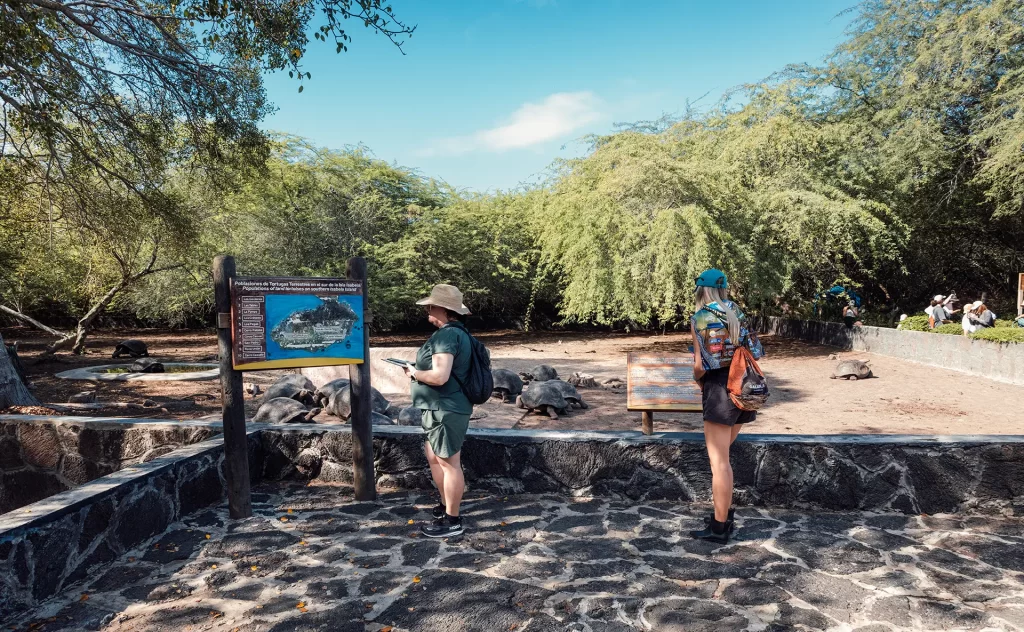
©Galápagos Conservancy
International Wetlands Day is celebrated today, 2nd February, as a way to highlight the importance of these unique eco-systems. This day is especially important in Galapagos because of its unmatched biodiversity. We celebrate and recognize wetlands, which are true natural gems integral to the region’s eco-diversity.
Dr. Our Director of Conservation, Jorge Carrion, sends his heartfelt congratulation to the Galapagos National Park Directorate, for their exceptional dedication and effective stewardship Galapagos’ unique ecosystems. This recognition is directed primarily towards the Ramsar site in Isabela where conservation and biodiversity have been maintained in a delicate equilibrium, thanks to the dedicated work of park rangers. This recognition reflects on the efforts made to protect and sustain these unique environments.
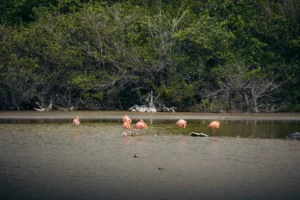
©Galápagos Conservancy
Challenges Facing Galapagos Wetlands
The wetlands of southern Isabela, which were designated as Ramsar Sites of International Importance by Ramsar in 2002, cover 872 hectares. They are home to 170 species including native and endemism. Invasive species pose a serious threat to these ecosystems, altering the natural balance in the wetlands.
To address these challenges, we need to develop strategies that are proactive and diligent. Geological formations which have created the lagoons of southern Isabela are a great example of the uniqueness of wetlands and the need to mitigate the current threats. Implemented in 2003, the Action Plan for the Conservation and Sustainable Use of Southern Isabela’s Wetlands provides a framework for the long-term sustainability of the unique Environment.
Wetlands are important for conservation.
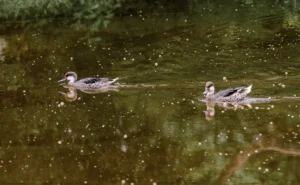
©Galápagos Conservancy
The wetlands are located within the Galapagos National Park & Marine Reserve and represent an important part of the natural heritage of the area. These ecosystems consist of mangroves and lagoons with brackish waters are formed by seawater infiltration and underground freshwater flows coming from the Sierra Negra volcano and Cerro Azul.
This vast area includes notable sites like Las Diablas and Los Tunos. It also contains Puerta del Jeli and Baltazar. These ecosystems are vital because they are located in the mangroves of Puerto Villamil Bay and shallow waters. This is the only urban area of Isabela. They are a reminder of the importance of aquatic environments for biological diversity in Galapagos.
These wetlands are essential for conserving Galapagos’ biodiversity. They provide habitats that are exclusive to certain species, which depend on them to complete their life cycles. These wetlands are home to a variety of species, including the flamingo, pintail, black-necked Stilt, oystercatcher, common gallinule, ghost crab, and Galapagos Ghost Crab.
Galapagos Conservation reaffirms commitment to protecting and conserving Galapagos wetlands which are vital to the region’s biodiversity on International Wetlands Day.
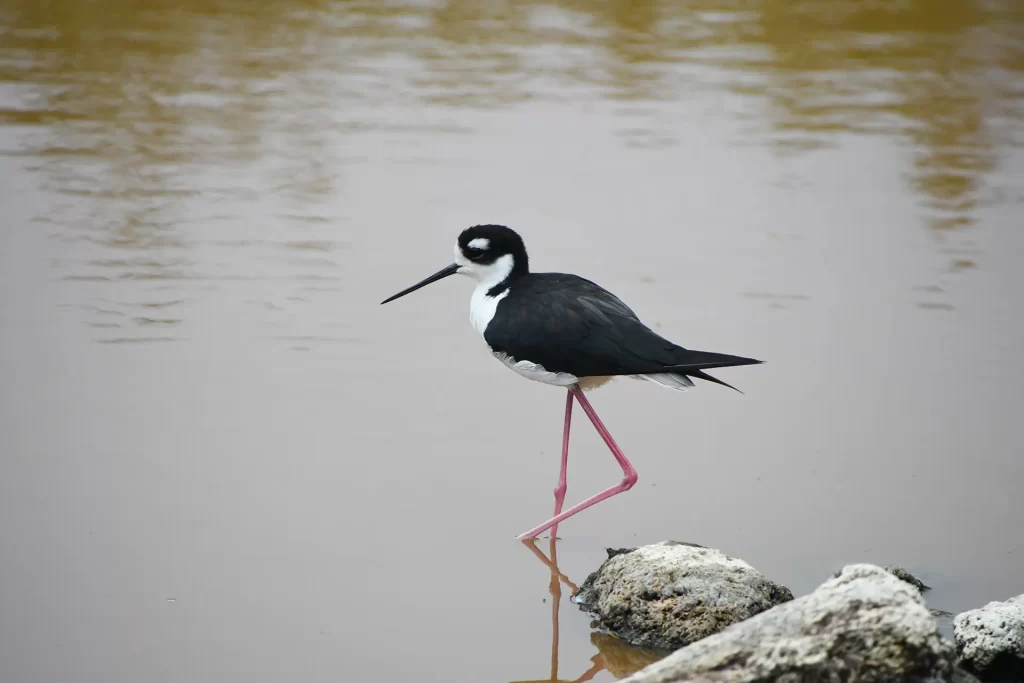
©Galápagos Conservancy